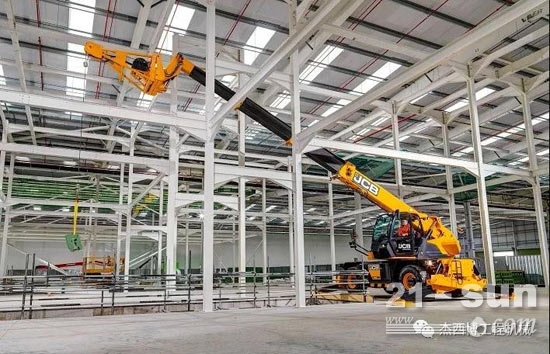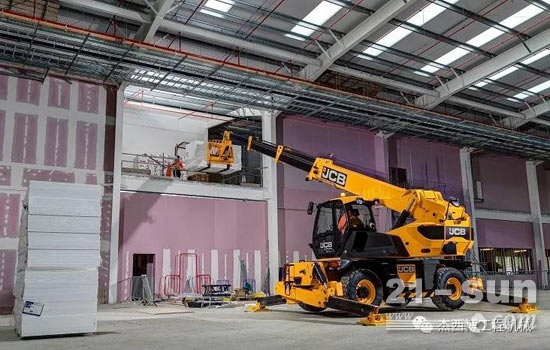In 1977, JCB invented the telescopic handler, which has been the world's first-selling telehandler brand for 42 consecutive years. To meet the growing demand for professional lifting contractors and rental markets, JCB introduced the Hydraload 555-210R, the first rotary telescopic handler with a maximum load capacity of 5.5 tons and a maximum working height of 20.5 meters.

JCB rotary telescopic forklift
The main features of the Hydraload555-210R rotary telescopic forklift are:
- Multi-function rotary telescopic forklift truck that provides lifting height of up to 20.5 meters;
- Maximum lifting weight of 5.5 tons;
- Faster speed of collection and higher productivity;
- Full visibility of operation and higher on-site safety;
- By replacing front-end attachments, dozens of functions such as winches, aerial work platforms, etc. can be realized.
As the inventor of telehandlers, JCB has accumulated more than 42 years of R&D design experience since 1977. JCB designed the Hydraload rotary telescopic forklift truck to meet the needs of professional lifting contractors and rental markets. JCB has decades of experience in designing and manufacturing rugged boom structures and drive trains, focusing on the reliability, versatility, productivity, ease of use and safety of the machine, providing customers with more It has unique advantages and unparalleled advantages in terms of non-stop running time and improving customer profitability.
In order to reduce construction preparation time, JCB specially developed and designed a one-button automatic unfolding, loading and leveling function. Faster lifting speed, higher auxiliary flow, especially for winch operation, and higher efficiency. Lower frame and engine layout, standing on the ground to complete routine maintenance, equipment maintenance performance is best. The lower design of the boom, without any work field of view, full visibility and safety. An optional work light combination and camera kit are also available to improve accuracy during working at heights.

JCB rotary telescopic forklift
The Hydraload 555-210R is equipped with the JCB Ecomax diesel engine and has a high degree of component and service versatility with other Loadall models. Standard JCB LiveLink remote monitoring system.
The Hydraload 555-210R has a maximum load capacity of 5.5 tons. The lift speed selectable and lift torque load limits help the operator optimize equipment operation to perform specific tasks. In addition, the machine can also identify JCB attachments developed using RFID technology, automatically providing the correct load chart to ensure the safe operation of the equipment.
As more and more off-site preform structures require greater lift capacity and greater field versatility, the Hydraload 555-210R meets the different construction requirements of contractors around the world. Back-transformed telehandlers have become a truly cost-effective alternative to small mobile cranes, providing the ability to quickly prepare and implement technically enhanced operations.
The JCB Hydraload rotary telehandler series will be launched first in the European market. (This article is from JCB Engineering Machinery)